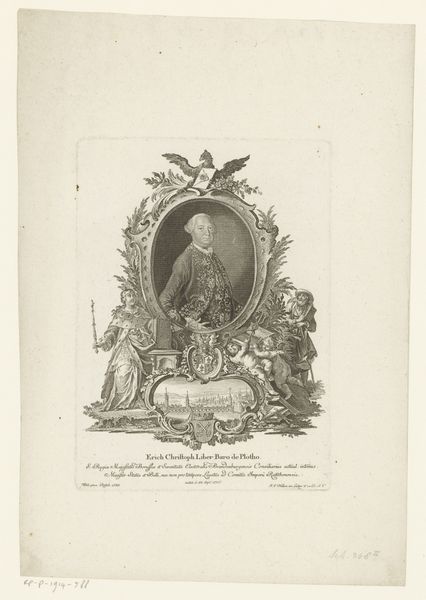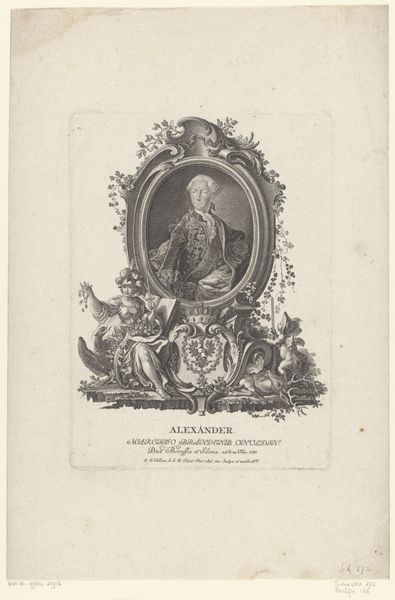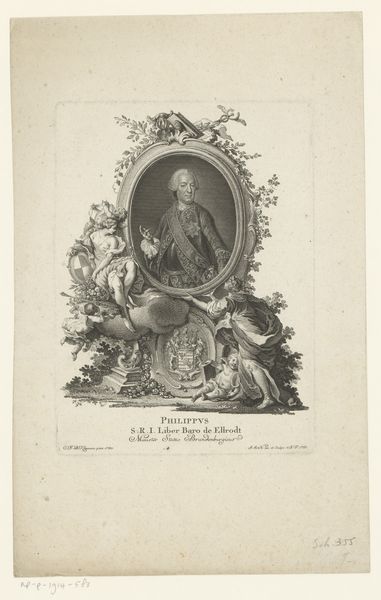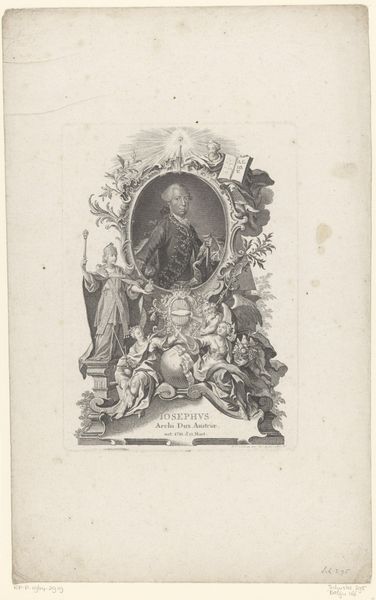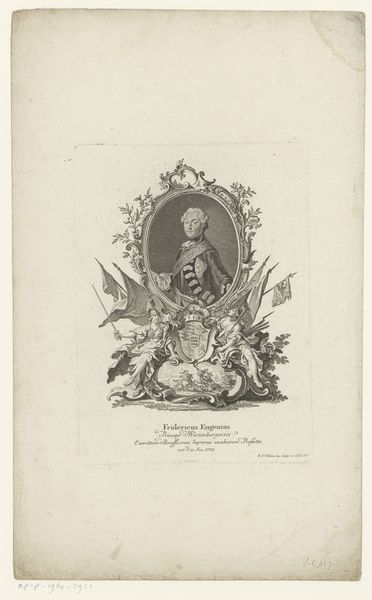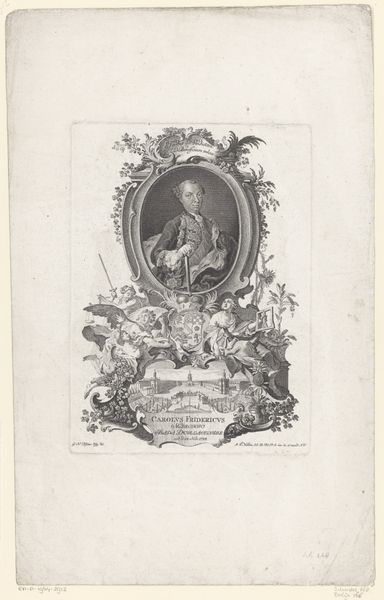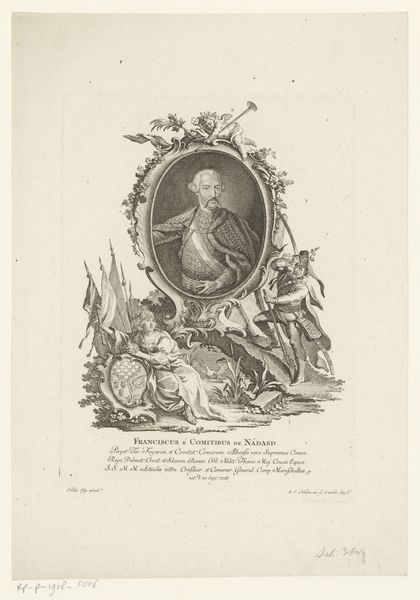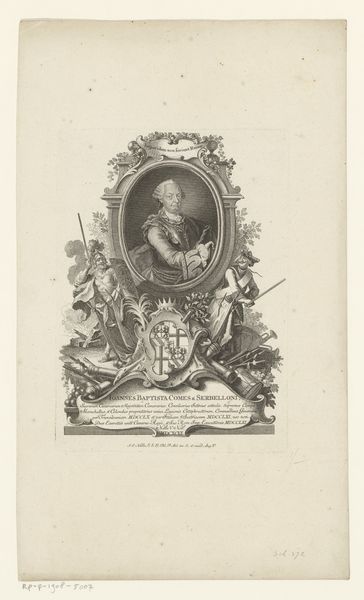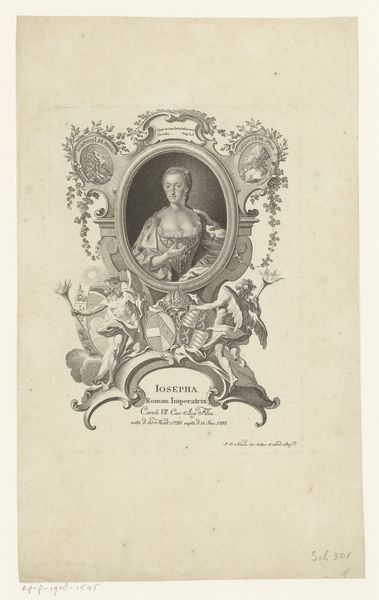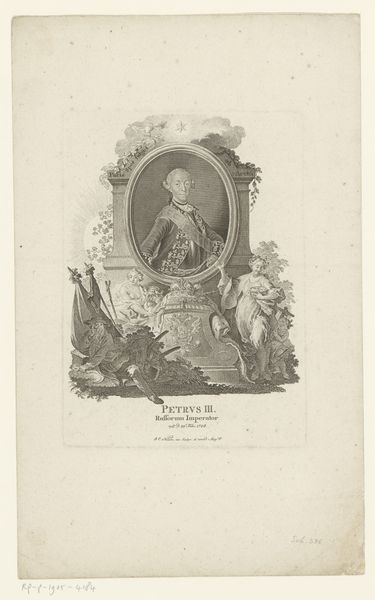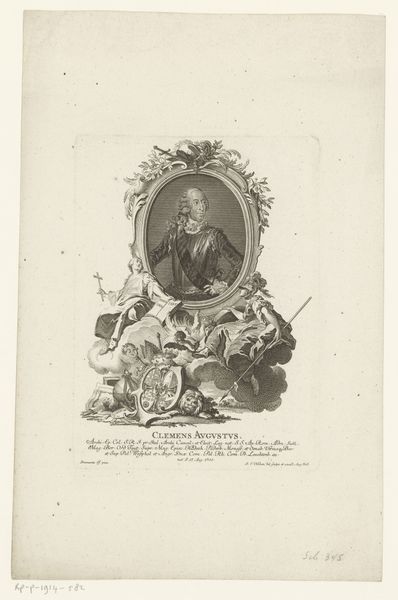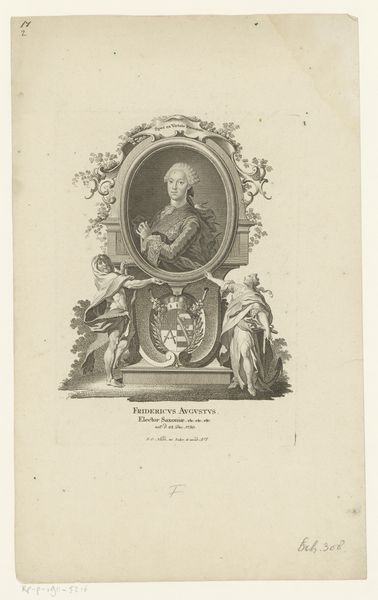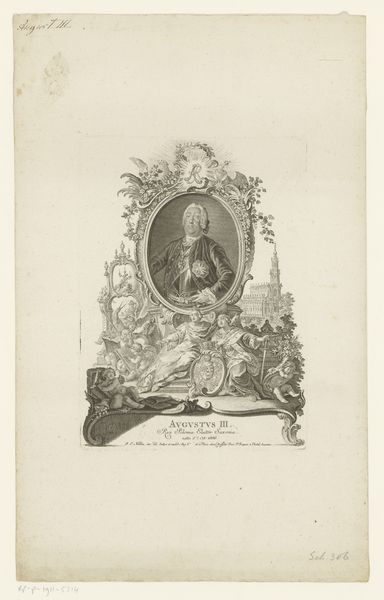
Dimensions: height 220 mm, width 160 mm
Copyright: Rijks Museum: Open Domain
Curator: Here in Gallery 16, we have an engraving titled "Portret van Jozef II, Rooms-Duits keizer," or "Portrait of Joseph II, Holy Roman Emperor" by Johann Esaias Nilson. It was created sometime between 1764 and 1788. Editor: My first thought is that it looks like a monument waiting to happen. Grand, you know? A bit stiff, but impressive in a historical-document sort of way. Curator: Nilson, active primarily as an engraver, capitalized on the demand for reproduced imagery in the late 18th century. Note the detail – it speaks to the painstaking labor involved in this particular method of printmaking, quite removed from today's ease of image production. Editor: I get a real sense of power here. It’s almost… performative, you know? The way the portrait is framed within that ornate oval, the cherubs sort of draped across the bottom, makes it seem like Joseph II is staging his own glorification. A real "look at me" moment. Curator: The choice of engraving as a medium is interesting when we consider its dissemination potential. This wasn't just about creating a singular iconic image; it was about manufacturing and circulating power through repeated impressions. Consider also the networks of artisans involved. Editor: The lines feel so… deliberate. It’s interesting how much weight those carefully etched marks carry. Each tiny stroke shapes the image— his stern gaze, the folds in his opulent robes, even the little fluff of the angel wings! Curator: Right. Engraving relies on meticulous planning and controlled execution, differing greatly from the impulsive gestures we see in painting, for instance. Editor: Knowing it’s an engraving changes my perspective, actually. All that detail painstakingly carved – the artisan’s own kind of performance, perhaps. Kind of brings you closer to both Jozef and Nilson in a strange, historical-material way. Curator: Exactly, thinking about the production and distribution illuminates how art functioned within 18th-century society, reinforcing hierarchies. This artwork stands as an interesting node for exploring power, labor, and dissemination in a pre-digital world. Editor: So, it’s not just a portrait of an emperor; it's a snapshot of a whole system. Pretty cool.
Comments
No comments
Be the first to comment and join the conversation on the ultimate creative platform.
